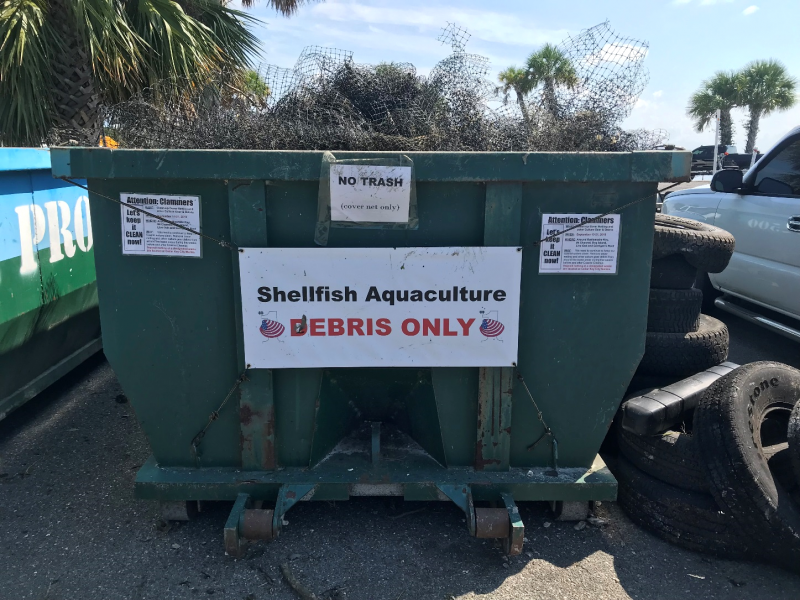Aquaculture, or the farming of aquatic animals, is becoming more and more popular along the coasts of the United States. As the demand for seafood rises around the world, aquaculture can provide a sustainable way to meet that demand. As this industry grows, new gear, technology and techniques are being developed. This makes it the perfect time to help farmers understand how to not only grow a good crop, but also to share best practices to prevent marine debris.
Much of the gear used in aquaculture, and in particular shellfish farming, is made from plastic. Plastic does not degrade easily in saltwater, which makes it great for farmers, but not so great for aquatic ecosystems when that gear is lost. Gear like clam cover netting, cages, bags, ropes, and PVC pipe can be lost accidentally during storms and other events, or abandoned on purpose if a company goes out of business.

In order to help with this issue in the state of Florida, the NOAA Marine Debris Program recently supported the Florida Department of Agriculture and Consumer Services, Division of Aquaculture (FDACS) in hosting a shellfish aquaculture gear management workshop in Cedar Key, Florida.
Over 40 individuals from the shellfish farming community, including local farmers and aquaculture business owners, attended the workshop and received resources to help prevent aquaculture debris. Experts from NOAA, FDACS, academia, and industry discussed the importance of environmental stewardship and provided practical management techniques to farmers, such as proper gear anchoring methods and severe-storm preparation strategies. Charles Grisafi, Florida and Caribbean Regional Coordinator for the Marine Debris Program, presented an overview of the marine debris problem, the Program’s ongoing work in Florida, and the importance of marine debris prevention as the shellfish aquaculture industry increases in size and begins utilizing new production methods and gear.

In partnership with FDACS, the NOAA Marine Debris Program is proud to share the workshop proceedings that summarize the workshop sessions, and includes additional resources to prevent shellfish aquaculture debris from entering our coastal waters, not just in Florida but beyond.
